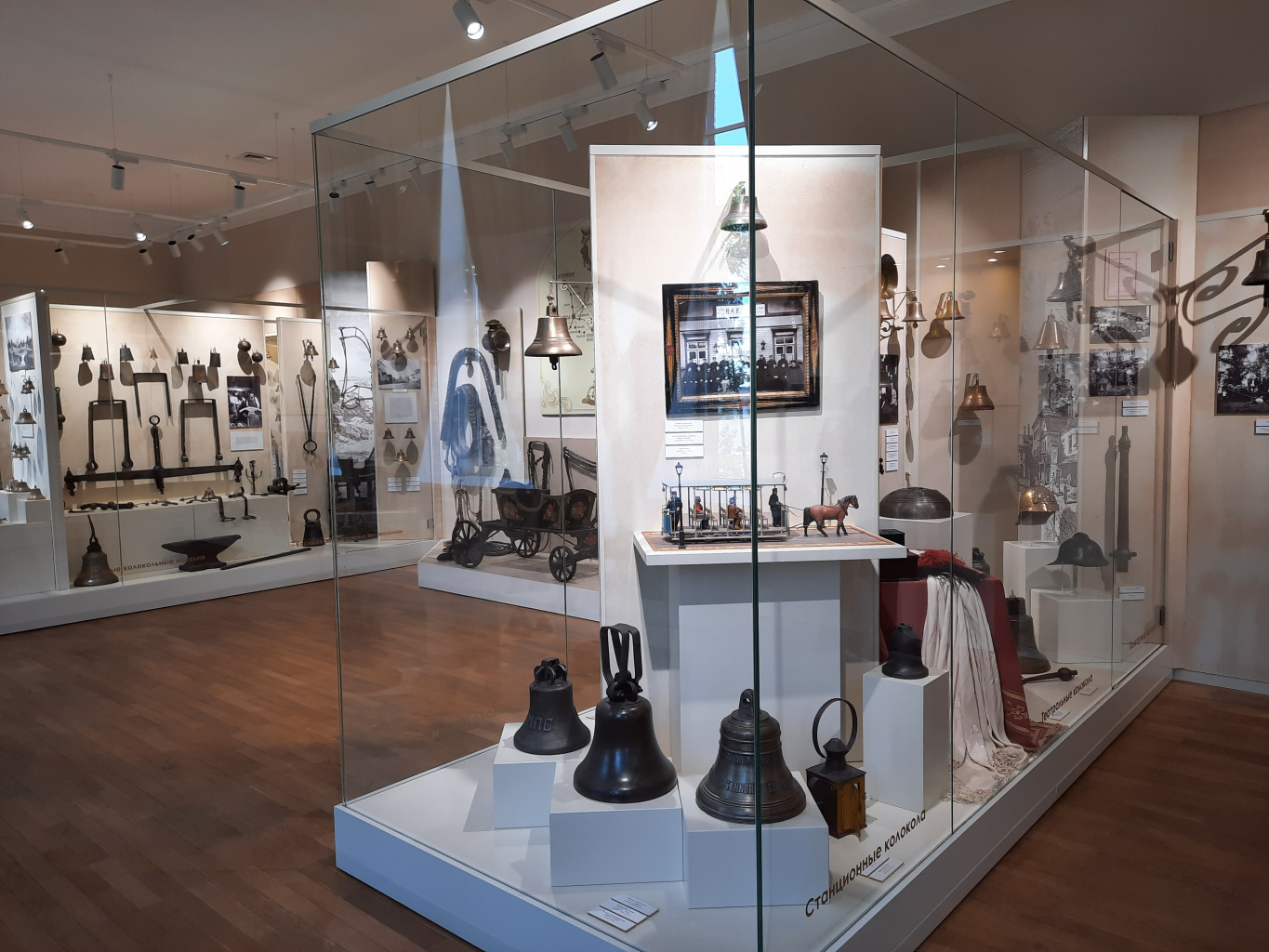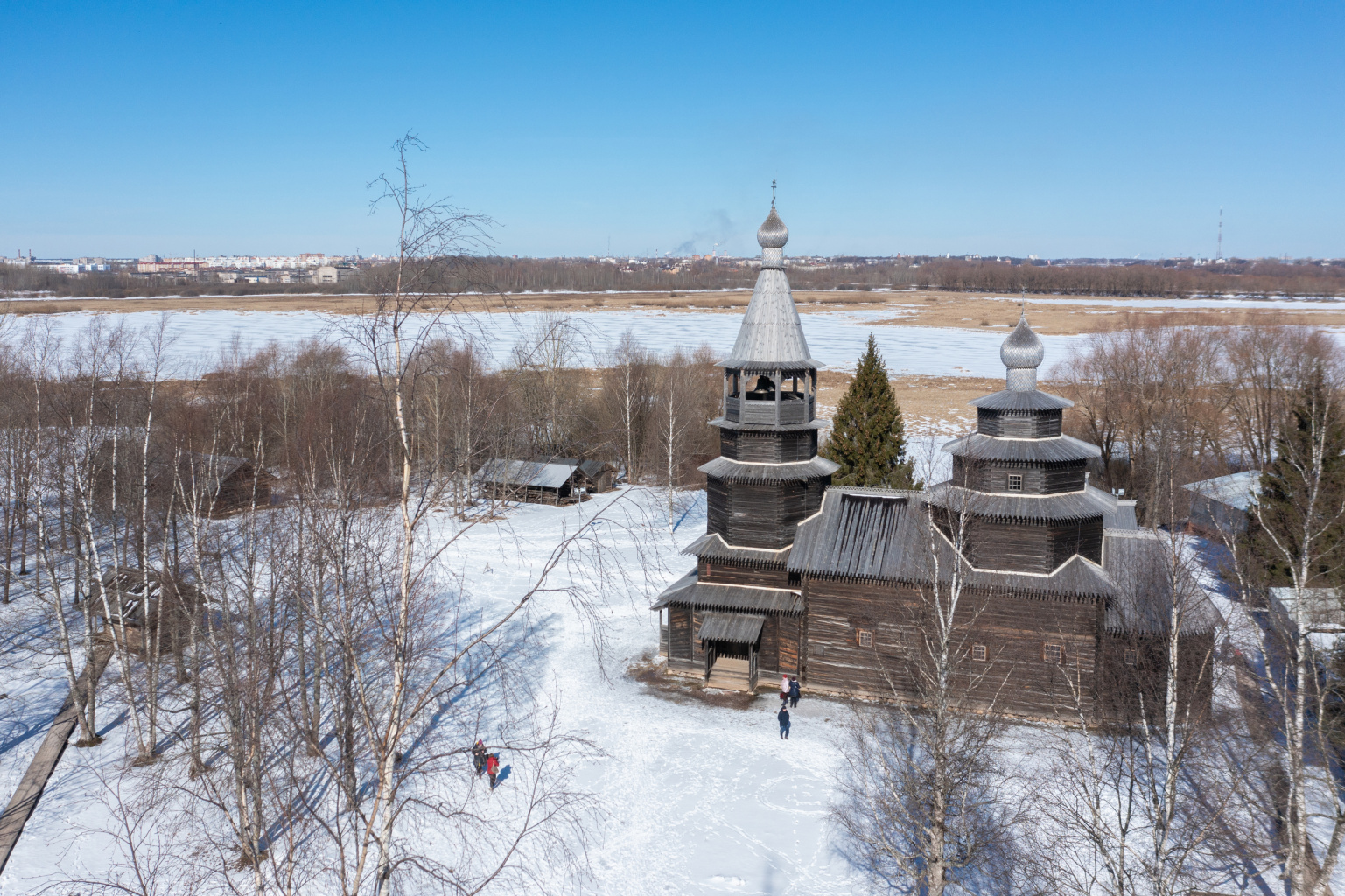The Novgorod Region: Open Air Museum, and more...
Nadezhda Gridneva, the Head of the regional “Rus Novgorodskaya” tourism office, told the EcoTourism
Expert portal about the special features and new tourism destinations in the region.
- It’s no secret that the tourist flow to the region is constantly growing. What attracts tourists first of
all?
- There are many “tourism anchors” attracting tourists to the Novgorod Region every day, from the unique cultural heritage and convenient location between the two capitals to the hospitality and a variety of tourism offers, in addition to the fact that people come to us to know about our history, to admire the architectural landmarks we are proud of. After all, 37 monuments and sites from the UNESCO World Heritage List are located in our area, with the Novgorod Kremlin (Detinets), the oldest of the Russian kremlins, and its crown St. Sophia Cathedral among them.
We really have many attractions, and they are not only in the city of Veliky Novgorod, but also in other parts of the Novgorod Region. The Novgorod Museum-Reserve alone has over 100 historical and architectural landmarks, 900 thousand exhibits, a network of the museum branches, including the museums of bells and the ‘county town’ in Valdai, the Dostoevsky’s house-museum, the museum of the novel “The Brothers Karamazov” in Staraya Russa, the museum-estate of commander-in-chief A.V.Suvorov in the village of Konchansko-Suvorovskoye, the estate of famous poet N. A. Nekrasov, and house-museum of writer G. I. Uspensky. And these are not all attractions. We have private museums where guided tours are carried out, and much more.

- The Novgorod Region is often perceived as an “open-air museum”...
- The Novgorod Region is a real paradise not only for lovers of history, but also for archeologists, they can participate in the search for artefacts by visiting active excavations held in the region. In addition, they can become utterly absorbed in the ‘revived’ history enjoying the most beautiful northern nature. The Rurik settlement where the ancient capital of ancient Rus (Russia) was located is just three kilometres away from Veliky Novgorod. It offers a beautiful view of the left bank of the Volkhov River with the Yuryev Monastery founded, according to some sources, by Prince Yaroslav the Wise, there are also the vast Solovensky Sea - Lake Ilmen - called so by the ancient Slavs.

There are many monasteries in the Novgorod Region where thousands of Christians and tourists come every year, with the Iversky Monastery, Mikhailo-Klopsky, Varlaamo-Khutynsky, Nikolo-Kosinsky, Nikolo-Vyazhishchsky ones among them. In the Novgorod Region, the travellers can visit the marvelous “Vitoslavlitsy” architectural and ethnographic open-air museum of wooden architecture, which contains authentic examples of architecture of the 16th - early 20th centuries.

- Is there a variety of the excursion programmes offered to the tourists visiting the Novgorod Region?
- Excursion routes both in Veliky Novgorod and in the region are well worked out. Moreover, if people want to travel in the region on their own, the local tourism offices will provide them with all the necessary information, booklets and brochures free of charge, which can help them not only see everything, but also taste delicious food, spend their time interestingly. Now, you can download the mobile application “Novgorod. Great Journey”, or listen to free audio guides while making tours of the main attractions on the Novgorod.travel portal.

The tourism industry of the Novgorod Region is rapidly changing for the better. Traditional excursions are gradually becoming a thing of the past, tourism is becoming more diverse and creative. In Veliky Novgorod and other cities of the region, the travellers can visit many interesting museums, walk around
old estates, ride yachts, and visit immersive excursions.
New hotels, glampings, cafes and restaurants are built, and tourist routes are created. Active, ecological and gastronomic tourism is developing, which is interesting for travellers of all ages. Particular attention is paid to family tourism in the region. For the youngest travellers, there are wildlife parks, a falconry yard, an adventure park with rope courses, horseback riding, various master classes, and more. Quite recently, we have developed two programmes for children, one is the “Sharkunok Challenge. Novgorod Saga”, which introduces children to the traditional Novgorod toy through quests, theatrical tours, master classes and music concerts. The second is “Veliky Novgorod - the City of the Boy Onfim”, where the boy Onfim who actually lived once in ancient Novgorod, gives an idea to young tourists how children lived 800 years ago, what they could do and make, how they studied, worked and had rest. Both projects were the prizewinners of the Third All-Russian Competition for Children’s Tourism Projects this year and are being successfully implemented in Veliky Novgorod.
- What can you advise to fans of outdoor activities and ecotourism?
- In the Novgorod Region, there is a “Valdaisky” National Park, many nature reserves as well as wildlife sanctuaries and natural monuments. First of all, I can advise the fans of ecotourism to go on a trip along the Great Valdai Trail - the longest eco-route in the North-West of Russia, it is 59 kilometres long. During such a trip, tourists are able to feel themselves a fisherman and a chef - go fishing and cook real Valdai fish soup using the fish they caught in the lake.

Enthusiasts of extreme tourism can go rafting down the stormy Msta River in summer, visit the all-season “Lubogorye” ski resort with the trails of varying difficulty good for downhill skiing and snowboarding down hills, up to 120 metres high. There is also a training slope for beginners, a slope for tubing, as well as a scenic route for cross-country skiing and a skating rink located in the forest. By the way, it is great here in the summer for those who goes in for forest trekking, taking pictures and fishing.
In the Khvoininsky District, the travellers can stay overnight in a real estate. They can go hunting and taste local dishes like elk soup, wild boar meat roast and bear meat cutlets, spicy hare, stewed potatoes with mushrooms in cream, pies with blueberries and lingonberries, a cloudberry jam, as well as berry liqueurs.
And, of course, it should be mentioned about the mineral water springs, the Novgorod Region is very rich in them, for example, at the “Staraya Russa” resort. Today, people come here not only to visit the ancient city, but also to stay at a balneological resort and drink mineral water, take mineral baths or therapeutic mud-baths.
- What areas of tourism are promising for the Novgorod Region?
- The development of water and cruise tourism is promising for the Novgorod Region. During the Soviet years, there were several water routes starting from Moscow and St. Petersburg. In addition, riverboat ‘buses’ ran between the settlements. Now, the choice of water routes is small - from the centre of Novgorod people can ride a boat to Lake Ilmen, to the Varlaamo-Khutynsky Monastery, there are also short boat rides to the Rurik settlement.
In the future, routes to the Yuriev Monastery and the Peryn Skete (small monastery) are being considered. Lake Ilmen offers great opportunities for cruises.
Volkhov, connecting Ilmen with Lake Ladoga, is a historical section of the legendary Trade Route from the Varangians to the Greeks. The wildest expectations include sailing to Veliky Novgorod from St.Petersburg through the Oreshek Fortress, Staraya Ladoga and Volkhov, that is, repeating part of the famous trade route.
- What can you advise the tourists who are going to visit Novgorod?
- For those who are going to travel from Moscow, the journey to Veliky Novgorod - which takes 8 hours by train - can be almost halved by changing trains at Chudovo station from Sapsan train to the Lastochka express train.
In Novgorod, I recommend purchasing the “Rus Novgorodskaya” guest card, which allows you to visit more than 50 museums for free and get discounts on excursions, master classes, as well as hotel accommodation and meals at cafes.
Tourists often ask what food to taste and what souvenirs to bring from the Novgorod Region. Most often, traditional dishes like cabbage soup are tasted, as well as sulchina (pancakes with filling), pike perch, and Valdai fish soup. During the gastronomic festival “Prince, Do You Want to Eat?!” held in November, the region’s residents and tourists had an opportunity to taste the diches that F. M.Dostoevsky and the heroes of his novels liked.
The Novgorod spice cakes that appeared, perhaps, even earlier than the Tula honey-cakes can be tasted and taken home as a souvenir. As for souvenirs, all kind of goods made of birch bark, as well as Valdai bells and Kresttsy stitchworks are still the most popular. By the way, those who wish can even take a tour of the famous factory located in the village of Kresttsy.
Photos courtesy of the “Rus Novgorodskaya” tourism office



